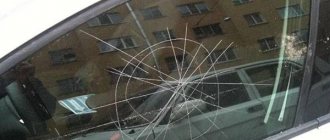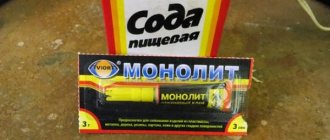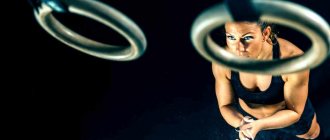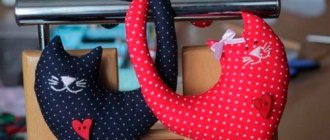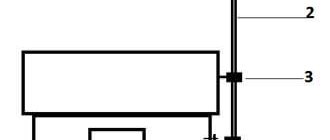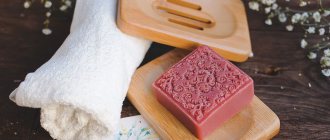Microcracks and scratches are the inevitable fate of any coating, no matter how careful handling is provided for it. This problem is also familiar to motorists who resort to all sorts of tricks to clean up minor, but no less annoying, defects.
The use of GOI paste with its fine-grained abrasive structure becomes a good help in this regard, capable of polishing scratches on metal, glass and plastic. However, today many consider this tool somewhat outdated and prefer to replace it. And today there are many options for such a replacement.
GOI paste: what is green mass?
The name stands for: State Optical Institute. This is where this cleaning material was created in the 30s. last century. It looks like a greenish mass, sold in the form of a smooth block and in a sealed jar.
Composition of the cleaning product
The main component in the composition is chromium oxide. The grain size of the preparation and its characteristics directly depend on its concentration. The higher the percentage of chromium oxide, the rougher the composition (variation can be from 60 to 85%).
Important! The green mixture is harmless to humans due to the fact that 3-valent chromium oxide is used in its creation, and only 6-valent chromium oxide is harmful. However, it is recommended to wear safety glasses and a mask when working, because when using it, dust appears that irritates the human mucous membranes.
Pasta varieties differ in grain size. Each of them is given a special number:
- No. 4 - rude. It contains: chromium oxide - 81%, stearin - 10, fat - 5, kerosene - 2, silica gel - 2. Light green tint, best scrapes the top layer of the material. Cleans out large scratches left after using other abrasives.
- No. 3 - average. Chromium oxide - 76 parts, fats - 10, stearin - 10, kerosene - 10, silica gel - 2. Pure green hue. Cleans out minor irregularities and scratches and gives the material a matte finish.
- No. 2 - thin. Chromium oxide - 74 parts, stearin - 10, fat - 10, oleic acid - 2.8, kerosene - 2, silica gel - 1, baking soda - 0.2. This composition is characterized by a dark green color. Used for polishing most products.
- No. 1 - thin. Nitric oxide - 65-70%, stearin - 10, fat - 10, kerosene - 10, silica gel - 1.8, soda - 0.2. It is distinguished by a dark color with a tint of green. Goi pastes 1 and 2 are designed for grinding or final finishing of the material, and give it shine and shine.
Important! The most common composition is GOI paste No. 2. It is ideal for products made of precious and non-ferrous metals, as well as glass and plastic.
Dried green mixture can be "reanimated" so that it becomes soft again. This is done using machine oil. Add 3-4 drops of machine or any other technical oil to a small piece, ground into fine crumbs. Place in the microwave for 30 seconds and grind the ingredients into a homogeneous mass.
Where is resin used?
Epoxy resin is a universal adhesive that hardens to a monolithic state. This material is familiar to many. Fiberglass impregnated with epoxy reinforces the bottoms of small boats and large ships. In the industrial sector, resin is used as a binding component in the manufacture of composite finishing tiles, slats, and deck boards.
In its pure form, the resin is used to create glossy transparent surfaces. After polymerization it acquires high density.
After grinding and polishing, ordinary resin takes on a resemblance to amber. Manufacturers have improved the composition and are producing colorless compositions that can be tinted to obtain the desired shade.
In its pure form, the resin is used to create glossy transparent surfaces.
In jewelry, polishing makes it possible to create real works of art. During processing, it acquires a noble appearance and retains its decorative effect for a long time. The two-component adhesive composition firmly adheres to the base, the resulting layer does not crack when drying due to changes in the internal structure.
Epoxy resin, poured into molds, after polymerization lends itself well to mechanical processing: cutting, grinding. In its solid state, the surface of a table filled with epoxy is comparable to artificial stone. The floors are poured with a polymer adhesive mixture. After processing, the resulting layer becomes transparent, through which the structure of the solid wood is clearly visible. The surface quality of finished products depends on what the epoxy resin is polished with.
The surface structure of a wooden epoxy countertop depends on the wood texture and fiber. There are fewer defects on cuts of dense tree species.
In jewelry, polishing makes it possible to create real works of art.
GOI paste for cars
Over time, scratches appear on the car body, headlights and glass dim, which greatly impairs the driver’s visibility. It would be logical to carry out polishing from time to time in a car dealership or with your own hands. A proven green mixture will help you cope with your problems.
Sand or polish?
All car owners should understand the fundamental differences between these processes.
- Grinding is a rough method of applying abrasives, which, by scraping off the top layer, level the surface. Used when serious scratches are evident. After this, the canvas will become matte, and additional exposure to compounds with fine grains will be required.
- Polishing is the final stage after grinding. The goal is to add shine to the product using fine-grained products.
Interesting! To understand what kind of GOI paste you will need for polishing or grinding the body, evaluate the condition of the car. To do this, run your fingernail over it. If it clings to a scratch, then the body will need grinding No. 3, and if not, then impact No. 2 or No. 1 will do.
Features of grinding different parts of a car
To polish the windshield, headlights or mirrors, use flannel, and felt is suitable for the body. The polishing paste is used as follows:
For glasses and headlights:
- Initially, wash the glass with water and shampoo, glass cleaner or alcohol, and wipe dry. This will enhance the effect.
- Polishing glass or headlights from scratches should be done with a special machine with a grinding wheel or a drill with a felt attachment. Manual work will only remove the dullness.
- Mix the green mass with machine oil at the rate of: a drop of oil per spoon of goya. Apply the mixture to the flannel pad of a polishing machine. Carefully treat the desired areas or, if desired, the entire glass.
- The direction of movement can be any, but the principle of lane overlap is encouraged.
- Periodically remove any remaining GOI with a paper towel and evaluate the result. Finish only when the area is perfectly smooth.
Important! If you are working on a specific area, then the surrounding area should be covered with plastic wrap so that you do not have to wash the entire car later.
- It is better not to grind excessively deep scratches, but to fill them with a special colorless compound.
Important! For glass, use only a thin mixture No. 1 or 2. Monitor the temperature of the glass, otherwise it will overheat and crack during the cleaning process.
For the body:
- To remove dullness from the body, clean the surface with a glass cleaner and wet it with water.
- Apply the paste to the circle of the car, wait until it accelerates to a speed of 1100 revolutions, and, without stopping, move across the area, maintaining an angle between the circle of the car and the body of 4-6 degrees.
- Remove any remaining drug with warm water under low pressure.
Video: Polishing a car with GOI paste
Description of the polishing process
To grind a metal surface you will need: laps and several tubes of diamond mixture with different grits. Diamond paste is evenly distributed over the working surface of a rag or other material. Experts have noticed an interesting pattern that makes it possible to improve the quality of metal processing.
Sanding metal parts
It turns out that you need to add castor or olive oil to the polishing substance. The ideal ratio is considered to be a mixture consisting of 40% diamond dust and 60% oil. After dilution, the mixture is immediately applied to the metal surface.
Related abrasive tools and grinding methods
Experts recommend starting to work only with large grains, gradually moving on to abrasives. During processing, make sure that no unnecessary elements get into the mixture - dust, sawdust, hair or pieces of rags. The presence of foreign objects greatly impairs the polishing to a shine. It is also recommended to wash your hands after changing from one grit to another.
Cleaning products using GOI depending on the material
The use of polishing compound depends on the type of material.
General principles of cleaning with GOI paste
Polishing the surface at home is easy. It is only important to follow the general advice and not spoil the fabric being processed. The product is used in the following sequence:
- To prevent scratches on the surface, take a piece of rag and soak it in gasoline.
- It is necessary to spread a little green mixture on a rag and wipe it on an unnecessary object made of metal or glass. This will cause excessively large crystals to disintegrate.
- Rub the desired area with light movements without pressure until the body becomes shiny. This treatment will only take 3-4 minutes. It is only important not to scratch the treated area with large particles.
- After finishing the processing, you need to walk over the sanded object one more time with gasoline or immerse the entire product in kerosene.
Metal processing with GOI paste
Before using GOI paste, it is important to decide on the type of metal. For example, silver cutlery (knives, spoons, forks) turns green over the years and requires high-quality cleaning. In order not to accidentally spoil expensive material with roughness and scratches, perform cleaning according to the following scheme, variety No. 3:
- Wash all necessary silver utensils under running water.
- Rub with a soft toothbrush and detergent.
- Separately, pour a glass of water into the saucepan, adding a spoonful of ammonia, a pinch of laundry soap and a whisper of washing powder.
- Boil the appliances in this composition.
- Rub a piece of felt with a bar of paste and treat the utensils. Then take a softer cloth and sand each spoon for a few minutes.
Read more about other silver cleaning methods here.
- Speaking of other metals, goyi is used with great success for knives, drills and other tools. Cleaning of metals is carried out according to the above scheme.
- To polish a watch, you must first remove the watch mechanism.
- Gold is cleaned with flannel or a piece of leather with mixture No. 1 applied. Try to apply without pressure so as not to damage the soft precious metal.
Important! Remember to always apply polish to a cloth or sanding wheel, not to the workpiece. This will prevent unsightly scratches from appearing.
Article on the topic: Methods for cleaning gold.
Video: Cleaning a coin with GOI paste
Processing your phone or tablet screen
To polish the screen of a mobile phone or tablet, you need composition No. 2 and a flannel rag.
Cleaning involves the following steps:
- Apply a thin layer of the green preparation to the flannel.
- Pre-rub any unwanted metal or glass surface with it to remove abrasives.
- Rub the display with light movements without pressure for 5 minutes, be careful when working with a fragile product.
- Remove any remaining product with a clean, dry cloth. The screen will be rubbed until it shines.
Important! The product for plastic is used in the same way as for glass.
Definition of the concept of “polishing” and its types
Polishing metal using an angle grinder
Polishing is a type of metal processing, during which the shine is restored to the metal surface. At the present stage, the following grinding methods are distinguished:
- Manual polishing - is carried out mainly during repair work;
- Semi-mechanical polishing - using special polishing wheels worn
Felt polishing discs for polishing metal
on a polishing machine; - Machine method - used in large enterprises. The metal surface is processed by a polishing machine;
- Water jet grinding on special machines. This technology is used only for processing large volumes of products. Plasma and chemical-mechanical polishing work on the same principle.
What tools and machines are used? Mechanical methods involve the use of the following tools and devices:
- polishing machine;
- Grinder;
- electric sharpener;
- drills with clamps.
This finishing method has several advantages. Firstly, it allows you to change the rotation frequency of circles and belts, which has a positive effect on the quality of processing of the metal plane; secondly, additional attachments made of fabric, leather, wool, etc. can be installed on the polishing machine.
Special grinding machine - angle grinder
Manual grinding differs from automated grinding in that its effectiveness depends on the quality of consumable polishing materials. In manual finishing, diamond paste and additives based on chromium or iron oxide are used. Smooth metal surfaces are polished with an ordinary file - a wooden block covered with a cloth, onto which polishing paste is applied.
Polishing metal with a special device
For what materials is GOI paste not suitable?
Do not forget that polishing even with such a miracle drug causes irreparable damage to some materials. It is not recommended to influence:
- gilding (risk of erasing the top layer);
- steel and nickel (except for scissors and knives);
- sapphire glass from a watch (the procedure is ineffective).
Have you used GOI at home? What advice would you give to readers? Write about your impressions in the comments below.
Useful tips
Polishing is a largely creative process. However, it is better to act according to proven methods and not violate technology.
How do you polish?
ClassicFolk
It is recommended to follow some tips:
- During operation, do not apply too much force or put pressure on the machine. This may cause the coating to overheat;
- If marks or scratches are clearly visible, you should not start polishing. It is necessary to carefully prepare the surface. sometimes this is neglected, hoping that the flaws will disappear during processing. However, they will remain and will be clearly visible;
- Matte finishes do not polish. Sometimes they become covered with shiny areas, which are restored using scratch paper.
By following these simple tips, you can get high-quality coverage and avoid annoying mistakes.
Furniture polishing is a procedure that allows you to restore old products and correct errors made during operation or transportation. The polishing technology is simple, but high quality can only be achieved with skills and experience. Otherwise, the flaws in the coating will only be exacerbated. If you don’t have confidence in your abilities, it’s better to entrust the work to specialists.
Chemical composition
The material is made in the form of rectangular bars of green color with a dark or light shade. The main components are chromium oxide, various binders and other additional components. Depending on the type of paste, the main abrasive makes up from 65 to 80 percent of the total volume. In addition to bars, the paste is produced in plastic containers and as an impregnation for felt circles in ready-made form. The soft circle is supplied for sale already impregnated with the required amount of GOI paste and is ready for use.
Surface preparation
In the manufacture of epoxy products, smudges and sagging of resin often occur; upon inspection, other defects are revealed:
- Excess leaked beyond the contour during pouring;
- Whitish spots caused by exposure to water vapor;
- Small chips, scuffs;
- Folds, shrinkage depressions;
- Rough edges, too sharp edges.
All these defects are eliminated with hard abrasives before grinding. Properly sanded resin looks unattractive, epoxy turns matte, this is normal.
Properly sanded resin looks unattractive, while epoxy turns out matte.
Before you start polishing the epoxy, you need to remove dust and degrease the surface (remove traces of hands and sanding paste). Without preliminary preparation, it will not be possible to thoroughly polish the resin to a mirror shine.
A few recommendations:
- When pouring the epoxy layer, it is important to pay great attention to the formation of the edges;
- If water gets into the resin, perfect transparency cannot be achieved by polishing; milky traces will remain;
- Epoxy is applied in several stages, allowing the previous layer to polymerize. Then the shrinkage of the material will be uniform, no cracks, dips, or waviness will appear;
- Before processing, all surfaces are subjected to test edge turning.
Before you start polishing the epoxy, you need to remove dust and degrease the surface.
Polished surface treatment
Over time, countertops and other epoxy resin products fade due to natural wear and mechanical damage to the surface. Irregularities and barely noticeable dents appear. The appearance of the layer deteriorates - the former luxurious shine disappears. Treatment with water-based parquet varnish followed by polishing with a piece of soft felt or wool will help restore presentability. The varnish will harden faster if you use a hairdryer or ultraviolet lamp to dry it. After rubbing, the original gloss returns.
Treatment with water-based parquet varnish followed by polishing with a piece of soft felt or wool will help restore presentability.
Video
Found an error in the text? Select it, press Ctrl + Enter and we will fix everything!
Polishing copper jewelry after patination. Video tutorial. #video tutorial@ww_mk_ >#polishing@ww_mk_idea
Wire wrap. MK. Ideas. Examples. post pinned
Wire wrap. MK. Ideas. Examples. post pinned
GOI paste is considered one of the most famous and useful chemical products from the point of view of industrial and household use. Show in full... It is worth noting that the described product was developed back in the 30s of the last century and until today is a popular composition, widely used in the applied arts, technical industry, restoration, etc. This paste can be found in virtually any department or store with household goods or radio electronics. Despite the fact that a particular product is considered specialized, virtually everyone knows about its existence.
Surface care
Features of epoxy resin are low heat resistance. Do not place anything hot on the table or use aggressive detergents containing acids and alkalis for washing. Chemical exposure can cause the resinous layer to become cloudy.
Do not place anything hot on the table or use aggressive detergents for washing.
Epoxy has taken a well-deserved place on construction sites and in everyday life due to its universal consumer properties, translucency, and low shrinkage coefficient. A synthetic oligomer, consisting of a hardener and a base, forms a waterproof film comparable to many building materials.
